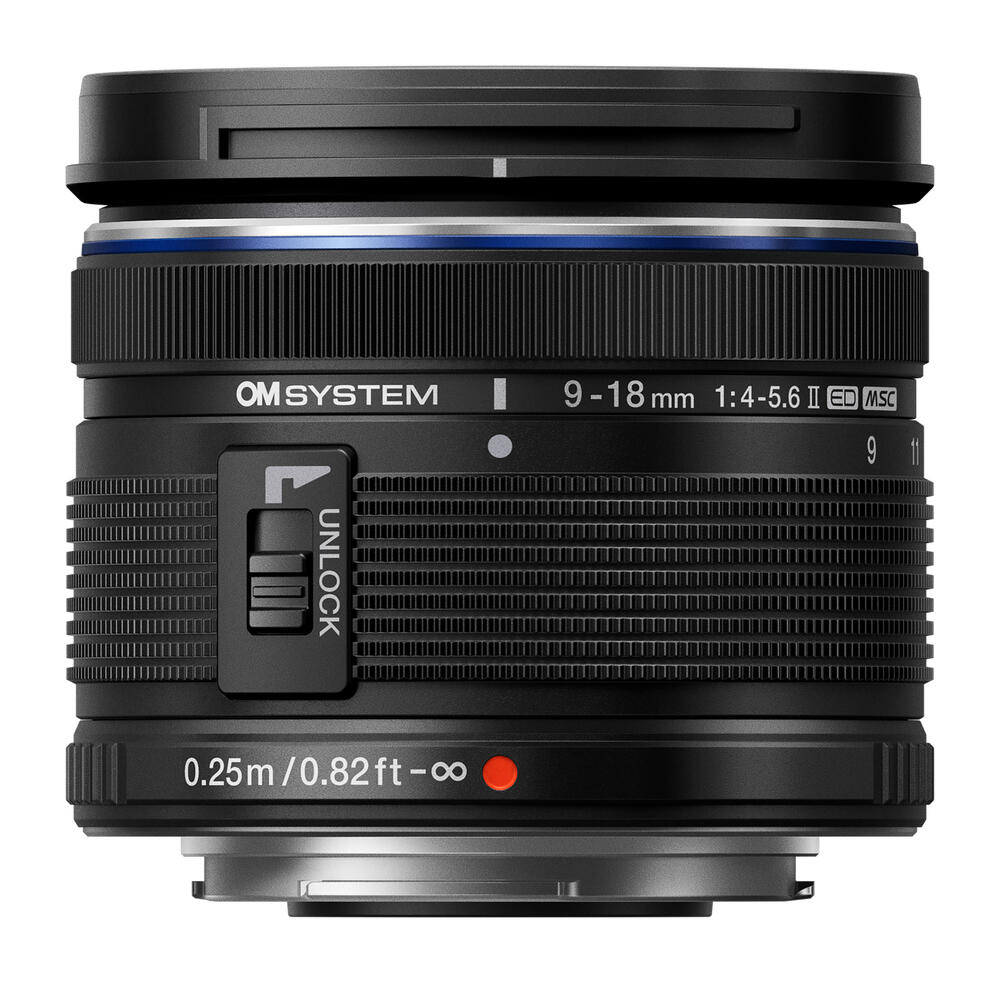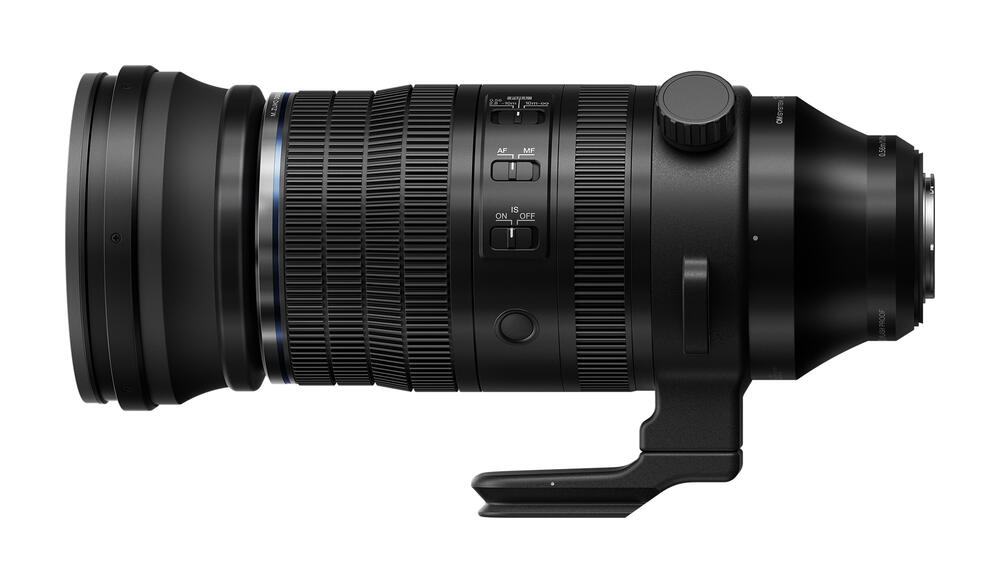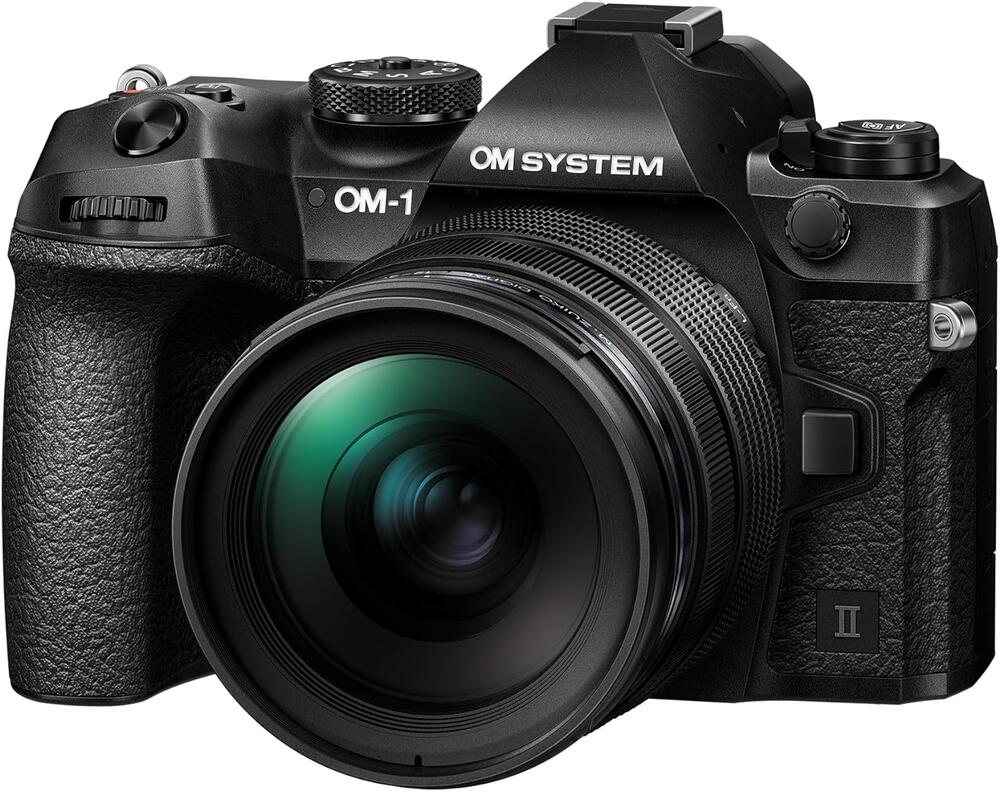OM SYSTEM is entering 2024 with a trio of significant announcements for its Micro Four Thirds mirrorless system. These include the unveiling of a new flagship camera, the OM-1 Mark II camera, an updated M.Zuiko Digital ED 9-18mm f/4-5.6 II wide-angle zoom lens, and a versatile super-telephoto zoom M.Zuiko Digital ED 150-600mm f/5-6.3 IS lens.
OM-1 Mark II costs $2,397.99, 9-18mm f/4-5.6 II costs $697.99 and 150-600mm f/5-6.3 IS costs $2,697.99. All the products are now available for pre-order at Amazon/ B&H/ Adorama.
OM SYSTEM OM-1 Mark II
The OM SYSTEM OM-1 Mark II marks a significant milestone as the brand’s latest flagship camera, representing a blend of advanced computational imaging capabilities and an unmistakable outdoorsy design, making it the first entirely original camera released under the OM SYSTEM name. Retaining some core specifications from its predecessor, such as the 20MP stacked BSI Live MOS sensor and the TruePic X processor, the OM-1 Mark II achieves the highest image quality in an OM SYSTEM body to date.
Noteworthy improvements include the 5-axis in-body image stabilization system, now capable of compensating for up to 8.5 stops of shake in-camera and supporting sync IS for IS-enabled lenses. The Live GND shooting feature allows users to switch between GND 2, 4, and 8 density values with Soft, Medium, and Hard edge effects, offering landscape photographers flexibility in exposure balancing without the need for large graduated ND filters.
Key Features
- 20MP Stacked BSI Live MOS MFT Sensor
- DCI/UHD 4K 60p 14-Bit Video Recording
- 10 fps Shooting, 120 fps with E. Shutter
- Cross Quad Pixel Phase-Detection AF
- 5.76m-Dot OLED Electronic Viewfinder
- 3.0″ 1.62m-Dot Swivel Touchscreen LCD
- 5-Axis In-Body Image Stabilization
- High-Res Shot, Live ND & Composite Modes
- IP53 Weather-Sealed & Freezeproof Design
- Dual UHS-II SD Card Slots
The camera continues to offer computational modes, such as the 80MP Tripod High Res Shot and 50MP Handheld High Res Shot modes, as well as Live Composite and Focus Stacking. Pro Capture mode is supported, with an enhanced buffer allowing for approximately 99 frames before releasing the shutter. The camera maintains its impressive continuous shooting speeds of 120 fps with fixed AF/AE or 50 fps with AF/AE tracking.
An enhancement over the original model, the OM-1 Mark II introduces improved AI Detection AF, enhancing subject recognition for various subjects, including humans, vehicles, animals, and more. This feature ensures faster and more accurate subject tracking, catering to photographers capturing dynamic scenes.
The physical construction of the OM-1 Mark II distinguishes it further, featuring a durable, IP53-rated system that is dustproof, splashproof, and freezeproof down to 14°F. Ergonomic improvements provide a better finger grip on dial surfaces, while the 5.76m-dot OLED viewfinder with 0.83x magnification and anti-fog coating enhances the shooting experience with a realistic 120-fps refresh rate.
In summary, the OM-1 Mark II stands as a robust upgrade to a distinctive camera system, tailored for wildlife and outdoor photography enthusiasts. The Micro Four Thirds format benefits wildlife and birding photographers, while computational imaging features like Live GND and Live ND appeal to creative landscape photographers seeking precise exposure control. The rugged build ensures reliable performance in challenging outdoor conditions, making the OM-1 Mark II a compelling choice for a diverse range of photographers.

M.Zuiko Digital ED 9-18mm f/4-5.6 II
The first of the two new lenses is the M.Zuiko Digital ED 9-18mm f/4-5.6 II zoom, offering an ultra-wide 18-36mm-equivalent range and prioritizing a compact, lightweight design coupled with impressive close-focusing capabilities. Clearly designed with landscape and nature photographers in mind, this lens is a compelling choice for those embarking on backpacking or hiking adventures to capture expansive views. With a retractable barrel measuring just under 2″ in length and weighing a mere 5.4 oz, it epitomizes portability. The lens has undergone a redesign from its previous Olympus-branded iteration, featuring a new color scheme, updated knurling, and now includes a petal-shaped lens hood.
Key Features
- Micro Four Thirds | f/4-5.6 to f22
- 18-36mm (Full-Frame Equivalent)
- Movie & Still Compatible AF System
- Compact & Lightweight
Performance-wise, the lens incorporates two DSA (Dual Super Aspherical) elements and extra-low dispersion glass to minimize distortion, maintain sharpness, and ensure accurate color reproduction. Despite its ultra-wide classification, this lens offers versatility, boasting a constant minimum focusing distance of 9.8″ and a maximum magnification of 0.2x at the long end. This versatility makes it an excellent choice for wide-angle close-up shooting, allowing photographers to exaggerate foreground subjects and infuse scenes with visual depth and drama. Whether capturing expansive landscapes or engaging in detailed close-up photography, the M.Zuiko Digital ED 9-18mm f/4-5.6 II proves to be a reliable and flexible companion for photographers seeking a balance between performance and portability.

M.Zuiko Digital ED 150-600mm f/5-6.3 IS
On the opposite end of the focal length spectrum, we find the M.Zuiko Digital ED 150-600mm f/5-6.3 IS, an impressive super-telephoto zoom equivalent to 300-1200mm. This lens is poised to become the preferred choice for birders and wildlife photographers within the system. Boasting its 7 stop-effective IS system and compatibility with 5-axis sync IS, it transforms handheld shooting into a viable option. Additionally, the lens can be coupled with optional teleconverters, such as the MC-20 2x Teleconverter, extending its reach to an effective 2400mm.
In comparison to the M.Zuiko Digital ED 150-400mm f/4.5 TC 1.25x IS PRO lens, this zoom sacrifices a bit of speed for increased reach while maintaining nearly identical size and weight. The 150-600mm measures 10.4″ in length and weighs 4.6 lb, whereas the former lens is 12.4″ long and weighs 4.1 lb. The choice between the two hinges on the photographer’s preference for top speed or extended reach, with the new lens achieving the highest focal length without the need for an internal teleconverter.
As expected from a super-telephoto lens, the 150-600mm holds an IPX1 rating, featuring a splash- and dust-resistant housing that excels in adverse weather conditions. Its front fluorine coating simplifies the cleaning process for the front element. In terms of handling, photographers can customize the zoom ring torque, secure the zoom position during travel, and implement a Focus Limiter for quicker focusing performance. Similar to the 9-18mm lens, the 150-600mm proves to be a discreetly excellent choice for close-up shooting, providing a maximum magnification of 0.7x at the wide end with a 1.8′ minimum focusing distance.





